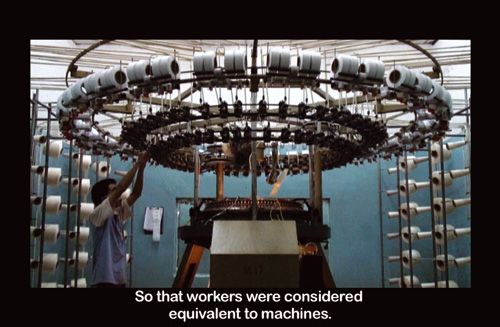Video Screening
Case Study China
Curated by Vera Tollmann
Mon, Oct 19–Sun, Oct 25, 2009
Opening hours: 11 – 19 h, closed on Tuesday I Free admission

In 1980, the fishing village Shenzhen was declared China’s first special economic zone. This marked the beginning of Deng Xiaoping’s open-door policy. Today - nearly thirty years later - 30% of all products Made in China stem from these special economic zones.
The video screening "Case Study China" focuses on the Chinese economy, its everyday settings, and side-effects. Since 2002, artists and architects from the MAP Office have been observing a factory in Shenzhen. For artist Xu Tan, it provides a dictionary of modernization, while Lu Chunsheng confronts Trotsky’s murder with the unrevolutionary office life of Chinese businessmen. Mathilde ter Heijne imagines an alternative concept of roles in a matriarchy, Clemens von Wedemeyer and Maya Schweizer rehearse a filmic adaptation of the classic Metropolis. Inspired by Antonioni’s aesthetics, Hannes Böck’s work finds a "soft" access to the building boom, and thus to his own vision of China.
"Seen from the perspective of Chinese and European video artists, present day China is shown without stereotyped images and with unusual clarity." Each of the artists approach their image of China through their unique reference systems. The documentary film "Chung Kuo – Cina," shot by Antonioni in 1972, provides an historical context.
With video works by: Hannes Böck, Lu Chunsheng, MAP OFFICE, Mathilde ter Heijne, Clemens von Wedemeyer / MayaSchweizer, Xu Tan, Zhou Tiehai, Yang Zhengzhong.
Case Study China is supported by